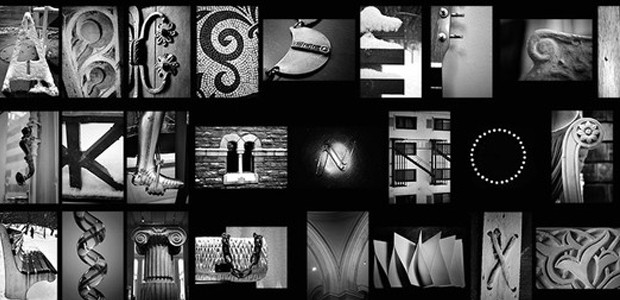Photography Definitions

Learning photography is not an easy task. It takes time, dedication, and perseverance just to mention a few things.
One of the reasons photography is challenging, especially for beginners, is due to the technical terms you have to know. Learning how to handle your camera is hard enough without having to learn a new language.
PhotoUno decided to help out! We put together a list of a definitions that you will need to know.
We hope these definitions help you on your photographic journey!!
Aperture:
Aperture is the size of the hole within the lens. The larger the hole, the more light enters the camera. The smaller the hole, the less light enters the camera. Aperture is measured in f-stops.
Composition:
Composition refers to the arrangement of content within your frame. A useful tip for arranging your composition is using the rule of thirds wherein any object lining up with any of the red intersections will, in theory, produce a good composition.
Depth of Field (DOF):
DOF is affected by aperture and is determined by the extent of sharpness in your image. It is how much of your image is sharp in front and in back of the subject you are focused.
With higher aperture values (e.g. f/22), we can achieve deep depth of field.
With lower aperture values (e.g. f/2.8) we can achieve shallow depth of field.
Digital noise:
Digital noise (or grain) is a byproduct of using high ISO numbers. They appear as red or green dots in your images and are apparent when zooming in to the image on your LCD screen.
F-Stop:
The size of the aperture (hole).
The lower the f stop number, the larger the aperture (hole)
The higher the f stop number, the smaller the aperture (hole)
Exposure:
How bright or dark the picture is.
Exposure indicator:
The exposure indicator is a scale found in the LCD monitor, viewfinder or control panel of the camera. It indicates whether the light reading of the scene is overexposed, underexposed or neutrally exposed.
Overexposed means there is too much light.
Underexposed means there isn’t enough light.
Neutral exposure the image has equal parts of light and shadow. Our aim is to make neutrally exposed photographs.
Histograms:
Histograms show us the brightness values of all the pixels in an image. The height of each slope represents the total number of pixels on for a given brightness in the entire image. We can see the histogram on our LCD screen.
ISO:
ISO stands for International Standards Organization. It controls the sensitivity of your camera’s sensor to light.
A higher numerical value (e.g. ISO 3200) means the camera is more sensitive to light and is useful in low-lit situations.
A low numerical value (e.g. ISO 100) means the camera is less sensitive to light and is useful in brightly-lit situations.
Manual mode:
Manual mode is where the photographer takes complete control over exposure in camera. The photographer sets all three interdependent elements of exposure: aperture, shutter and ISO.
Metering modes:
Metering modes are different ways the camera can measure light to provide different exposure readings. There are three types of metering modes on most digital SLR’s: spot, center and evaluative.
Spot metering measures a very small area around the center-point focus. It is useful for high-contrast situations or if you want to only meter a particular area of a scene.
Center-weighted metering measures 60% of the space around the center-point focus with 40% of the remaining area. This measurement is an average and is great for portraits.
Evaluative metering is a 100% average of the entire scene. This measurement considers the entire scene and is useful for evenly lit situations.
Night photography:
Night photography involves making pictures in low-lit situations. It is often useful to shoot with long shutter speeds (i.e. 15-30 seconds) and a low ISO. Using a tripod will allow the camera to be in a stagnant position. If using a tripod or steady surface, be sure to turn off your VR/IS.
Panning:
Panning is a technique where the photograph captures the horizontal movement of a moving object by following it with the camera until the shutter speed stops. The background typically shows motion while the moving object stays focused.
Painting with the light:
Painting with the light is where the photographer uses an artificial light source (i.e. a flash light) to literally add or “paint” light onto the scene. Use a long shutter speed (i.e. 30 seconds) and shoot in a low-lit situations.
Shutter:
Shutter speed is a measure of time controlled by the curtains that open in front of your sensor to allow light in from the aperture hole. Shutter speeds are measured in fractions or seconds.
Shutter speed is a measure of time that the camera sees light for. The longer the shutter speed, the more time light is exposed to the sensor. The shorter the shutter speed, the less time light is exposed to the sensor.
Tricky lighting situation:
A tricky lighting situation is where light is difficult to meter. This means that in the same frame you have different lights (too much light on one side or too little light on the other), which produces an over exposed or under exposed photo.
White balance:
White balance is an in-camera process that determines the correct color for white and neutral tones (skin, grays) for an image. All light sources have a specific color temperature and it is the goal of your camera’s white balance function to balance the light. White balance is particularly useful for mixed lighting situations where multiple light sources reflect light on your subjects.
Photograph by Veronica Garcia Valdez
Comments
Sign in to comment.